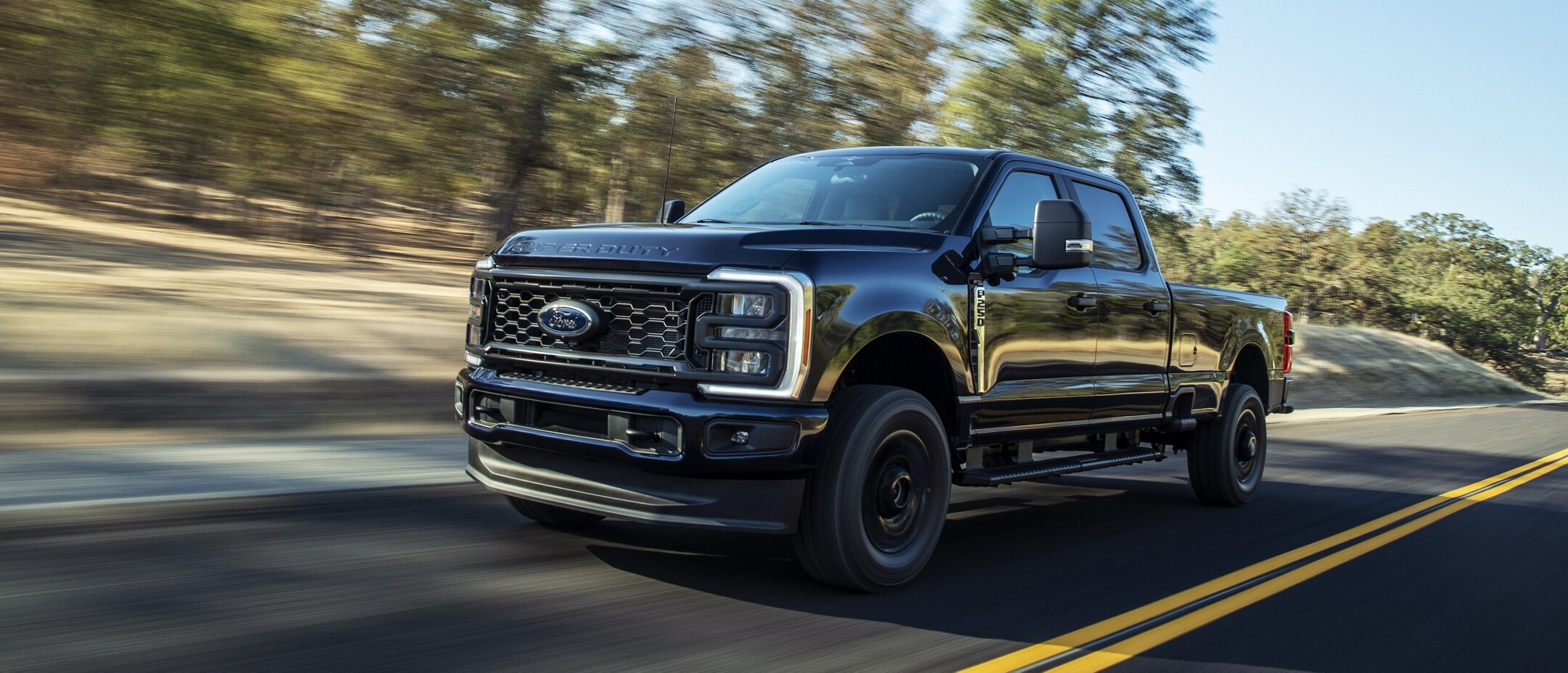In the world of heavy-duty vehicles, diesel trucks represent the backbone of industries ranging from construction and agriculture to long-haul transportation. These powerful machines are expected to withstand punishing conditions, haul massive loads, and operate reliably for hundreds of thousands of miles.
However, not all diesel trucks are created equal. While some models have established legendary reputations for reliability and longevity, others have become notorious for chronic issues that leave owners stranded and wallets empty.
This stark contrast in dependability isn’t just about brand loyalty, it’s backed by real-world performance records, mechanic testimonials, and extensive owner experiences across decades of operation.
Today, we’ll examine five diesel trucks that have proven themselves virtually indestructible against the test of time and harsh conditions, followed by five models that consistently disappoint with their tendency to break down when you need them most.
Whether you’re in the market for a workhorse that will serve faithfully for years or simply want to avoid costly maintenance nightmares, this comprehensive guide will help you navigate the diesel truck world with confidence.
5 Diesel Trucks That Never Quit
These legendary workhorses feature overbuilt engines with robust components that routinely accumulate 500,000+ miles while maintaining their original power and reliability.
Their simplified designs prioritize durability over flashy features, creating powerplants that shrug off punishing towing duties and extreme operating conditions decade after decade.
From freezing Canadian winters to scorching Arizona summers, these unstoppable diesels start without hesitation and deliver consistent performance regardless of climate challenges.
Owners proudly share stories of crossing seven-figure mileage thresholds with only routine maintenance, proving these exceptional machines truly deserve their reputation for immortality.
1. Toyota Hilux Diesel
The Toyota Hilux diesel has achieved almost mythical status in indestructible vehicles, and for good reason. First introduced in 1968, this compact pickup has evolved through eight generations while maintaining its core reputation for extraordinary resilience.
The diesel variants, particularly those equipped with the legendary 2L and 3L engines of the 1980s and 1990s, and later the D-4D powerplants, have demonstrated an uncanny ability to withstand punishment that would cripple lesser vehicles.
What makes the Hilux diesel so remarkably durable is its brilliantly simple engineering philosophy. Toyota deliberately avoided over-complication, instead focusing on robust components with generous safety margins.
The mechanical fuel injection systems in older models operate reliably even with poor-quality diesel fuel, while the overbuilt manual transmissions and transfer cases rarely experience catastrophic failures.
The understressed engines typically deliver modest power outputs but compensate with exceptional longevity, many units easily exceeding 500,000 kilometers without internal repairs.
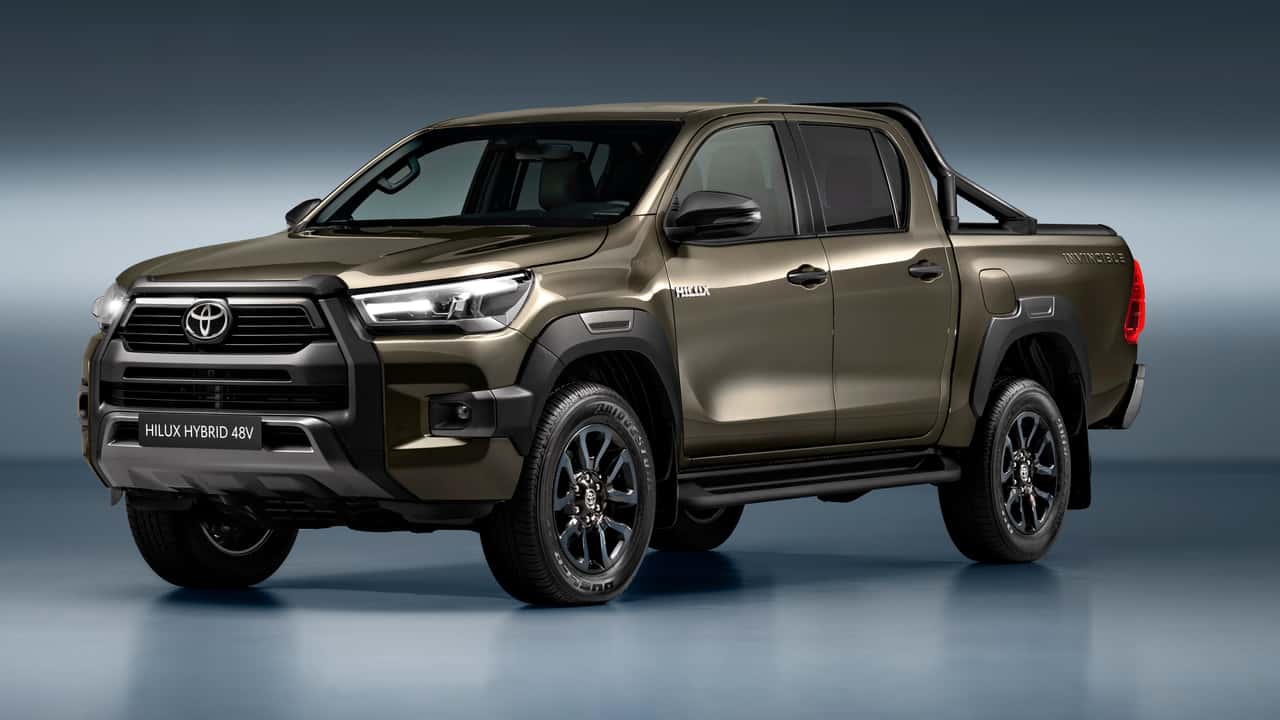
Suspension components on the Hilux diesel are similarly designed for abuse, with leaf springs and solid axles that may ride roughly but rarely break.
The truck’s electrical system, often the Achilles’ heel of modern vehicles, is refreshingly straightforward with minimal electronic dependencies in most generations. This simplicity translates to fewer potential failure points and easier field repairs when problems do arise.
Global testimonials to the Hilux diesel’s durability are abundant and impressive. In Australia’s Outback, these trucks have routinely operated in scorching temperatures and dust-choked conditions for decades.
Throughout Africa, they serve as workhorses in regions where parts and service are scarce. Perhaps most famously, a 1988 Hilux diesel survived being submerged in seawater, set on fire, and dropped from a building in a popular British television program and still started afterward.
Owners consistently report exceptional reliability even in high-mileage examples, with many trucks accumulating over 300,000 miles while requiring nothing beyond routine maintenance.
While newer models have incorporated more electronic systems to meet emissions standards, they’ve largely preserved the fundamental durability that made their predecessors legendary. For those seeking a diesel truck that refuses to die, the Toyota Hilux stands as perhaps the ultimate testament to automotive longevity.
2. Cummins-Powered Ram 2500/3500 (1989-1998)
The marriage between Dodge Ram heavy-duty trucks and Cummins diesel engines created what many consider the gold standard in diesel pickup reliability.
Specifically, the first-generation Cummins 5.9L inline-six (known as the 12-valve) introduced in 1989 revolutionized the consumer diesel truck market with its combination of industrial-grade durability and surprising efficiency.
These early Ram-Cummins trucks have achieved legendary status among diesel enthusiasts, with countless examples still performing hard work well past the million-mile mark.
The heart of these trucks’ reliability lies in the Cummins B-Series engine’s agricultural heritage. Originally designed for tractors, generators, and commercial equipment, the 5.9L turbo diesel was dramatically overbuilt for pickup truck duty.
The engine features a cast-iron block and head, forged-steel crankshaft, and substantial connecting rods that can handle stresses far beyond stock power levels.
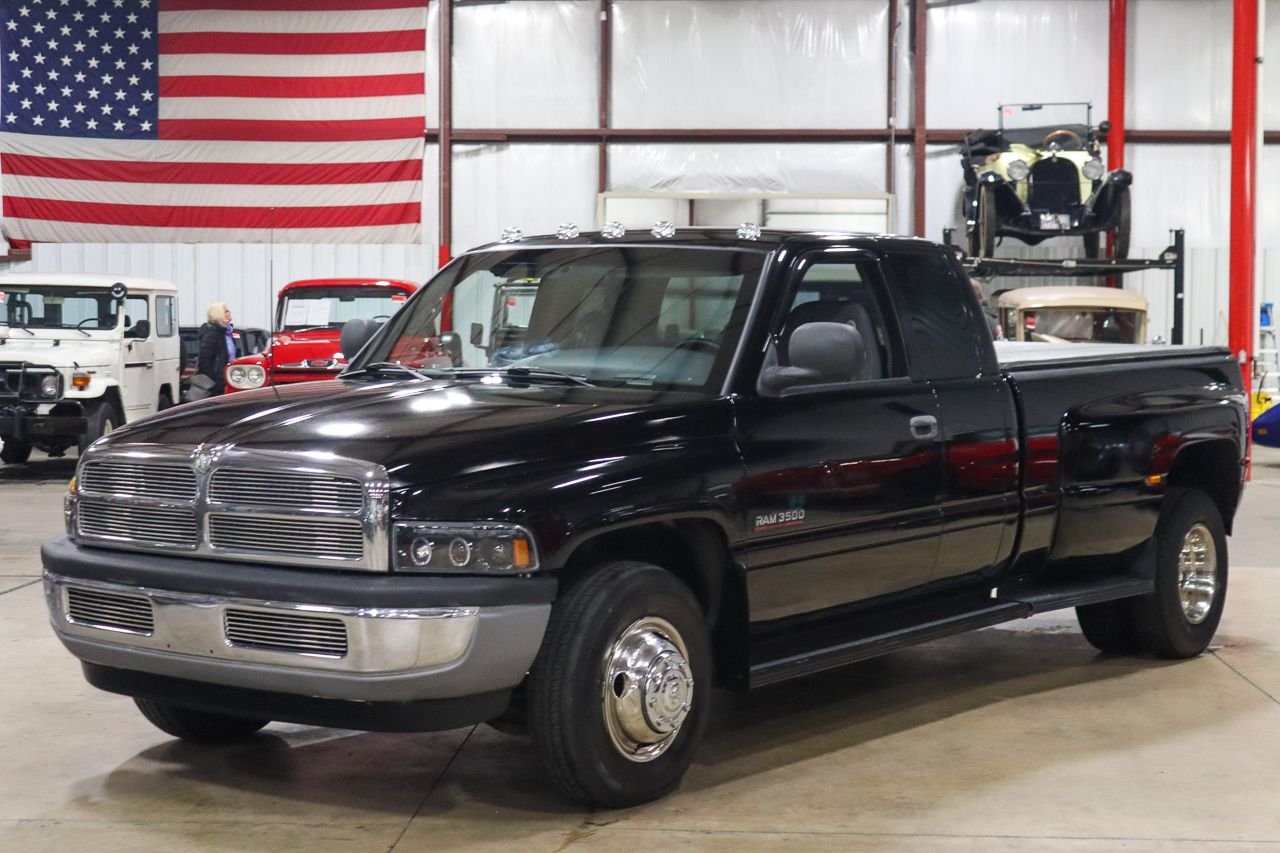
The simple mechanical injection pump operates without electronic controls, making it virtually immune to electrical failures and capable of running on lower-quality diesel fuels when necessary.
Complementing the nearly bulletproof engine, the 1989-1998 Ram trucks featured robust Getrag manual transmissions or durable Chrysler automatics when properly maintained.
The conventional leaf-spring suspension, while not the most comfortable, rarely experiences catastrophic failures even under heavy loads. The truck’s straightforward design extends to its electrical system, which lacks the complex networks of sensors and modules that plague many modern vehicles.
What truly distinguishes these early Cummins-powered Rams is their exceptional tolerance for neglect and abuse. Owners frequently report trucks running reliably despite extended oil change intervals, extreme temperature conditions, and punishing workloads.
The engine’s long-stroke, low-RPM design reduces wear while delivering massive torque (up to 400 lb-ft in later 12-valve models) for effortless towing and hauling. Maintenance costs remain reasonable due to the simple mechanical design and wide availability of parts.
Perhaps the most compelling evidence of these trucks’ durability comes from the used market, where 30-year-old examples with 300,000+ miles regularly command prices that would be laughable for most vehicles of similar age.
The 12-valve Cummins has developed such a reputation for reliability that many owners of newer diesel trucks seek out these older models for their simplicity and longevity.
While lacking modern amenities and emissions equipment, the 1989-1998 Ram Cummins trucks represent a high-water mark in diesel pickup durability that subsequent generations have struggled to match.
3. Mercedes-Benz W123 300D/TD
Few vehicles in automotive history can match the legendary reliability of the Mercedes-Benz W123 diesel models, particularly the 300D sedan and 300TD wagon produced between 1976 and 1985.
These meticulously engineered German classics have earned their reputation as possibly the most durable passenger vehicles ever mass-produced, with countless examples still serving as daily drivers after four decades and over a million kilometers on their original powertrains.
The foundation of the W123 diesel’s extraordinary longevity is its OM617 five-cylinder turbodiesel engine. This 3.0-liter powerplant represents Mercedes-Benz engineering philosophy at its finest, conservative power outputs (approximately 120 horsepower), but built to commercial standards with exceptional precision.
The engine features a cast-iron block, aluminum head, and a forged-steel crankshaft so robust that similar variants were later adapted for light aircraft use. The mechanical fuel injection system, produced by Bosch, is renowned for its reliability and longevity, often operating flawlessly for decades without major service.
Beyond the engine, every aspect of the W123 diesel was engineered with durability as a primary consideration. The four-speed automatic transmissions (or optional five-speed manuals) were designed for several hundred thousand miles of service.
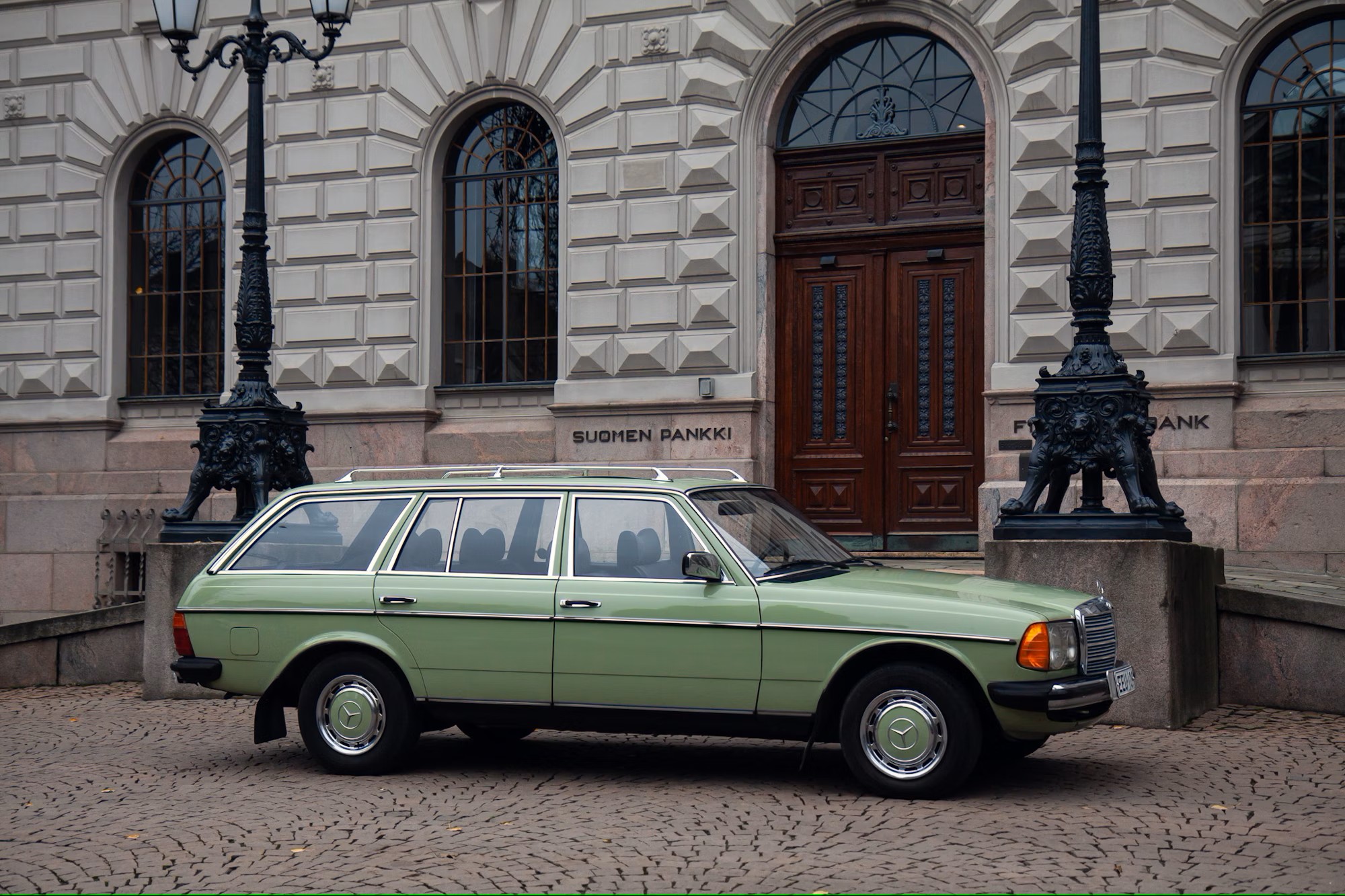
The electrical systems, while comprehensive for their era, were thoughtfully designed with serviceability in mind and largely avoid the complexity that causes problems in modern vehicles.
Interior components, from switchgear to seat frames, were built to withstand decades of use without failure. The W123’s body structure deserves special mention for its exceptional corrosion resistance, unusual for its era thanks to thorough factory rustproofing and zinc-coated steel in critical areas.
The suspension system, featuring a sophisticated semi-trailing arm rear design, provides both ride comfort and remarkable durability even on rough roads. These qualities made the W123 diesel particularly popular in countries with poor infrastructure, from Eastern Europe to Africa and the Middle East.
Most impressively, these Mercedes diesels achieve their legendary status while demanding relatively modest maintenance. With regular oil changes using proper diesel-rated lubricants, periodic valve adjustments, and attention to the timing chain, these engines routinely exceed 500,000 miles without internal repairs.
Taxi drivers in Germany, Greece, and Morocco demonstrated the W123’s ultimate durability potential, with documented examples exceeding 1.2 million kilometers on original engines.
For those seeking a diesel vehicle that truly never quits, the W123 300D/TD remains the benchmark against which all other passenger vehicle reliability claims are measured.
4. Ford F-250/F-350 with 7.3L Power Stroke (1994-2003)
The Ford Super Duty trucks equipped with the 7.3L Power Stroke diesel engine have earned an enduring reputation as some of the most dependable workhorses ever to wear the Blue Oval badge.
Developed in collaboration with Navistar International, this legendary diesel powerplant helped establish Ford’s dominance in the heavy-duty pickup segment through a nearly decade-long production run that set standards for reliability that many argue haven’t been matched since.
The 7.3L Power Stroke’s exceptional durability stems from its fundamentally conservative design approach. With a displacement of 444 cubic inches, this V8 turbodiesel features a robust cast-iron block and heads, forged-steel connecting rods, and a massive crankshaft capable of handling stresses far beyond factory power levels.
The hydraulically actuated, electronically controlled unit injector (HEUI) fuel system represented an innovative middle ground between purely mechanical systems and the common-rail technology that would follow.
While more complex than older designs, it proved remarkably reliable when properly maintained and less sensitive to fuel quality issues than later high-pressure systems.

The cooling system on these trucks deserves special mention, as Ford engineered it with significant reserve capacity that prevents the overheating issues that plague many diesel workhorses.
The transmission options, particularly the stout ZF5 five-speed manual and the heavy-duty 4R100 automatic (with proper maintenance), complement the engine’s durability, creating powertrains capable of hauling immense loads for hundreds of thousands of miles.
The Super Duty’s frame and suspension components were similarly overbuilt, contributing to the truck’s reputation for handling punishing work conditions year after year.
These Power Stroke-equipped Fords developed a particularly strong following among commercial users, farmers, and heavy equipment operators who valued the engine’s combination of reliability and serviceability.
With routine maintenance, primarily clean oil, fuel filter changes, and attention to the cooling system, these engines routinely surpass 400,000 miles without requiring major internal repairs.
What minor issues do arise tend to be predictable and relatively inexpensive to address, unlike the complex emissions-related failures common to newer diesel trucks.
Perhaps the most telling evidence of the 7.3L Power Stroke’s exceptional durability is its continued desirability in the used market. Nearly two decades after the last one rolled off the assembly line, these trucks often command premium prices compared to newer models with similar mileage.
Many commercial operators and diesel enthusiasts specifically seek out well-maintained examples from this era, considering them the perfect balance between modern amenities and old-school reliability.
While lacking the power output and emissions controls of contemporary diesel pickups, the 7.3L Power Stroke Ford Super Duty represents a high-water mark in diesel truck durability that keeps these workhorses in demand long after most vehicles their age would have been scrapped.
Also Read: 5 Cars That Nail Voice Commands and 5 That Mishear Constantly
5. Isuzu NPR/NQR Diesel Cabover Trucks
The Isuzu NPR and NQR diesel cabover trucks stand as silent titans in the commercial vehicle world, rarely receiving the public recognition they deserve despite their extraordinary reliability records.
These medium-duty workhorses, part of Isuzu’s N-Series (also marketed under various badges including Chevrolet and GMC), have built their reputation on providing year after year of steadfast service in the demanding world of last-mile delivery, urban logistics, and specialized work applications.
At the core of the NPR/NQR’s legendary dependability are Isuzu’s diesel engines, particularly the 4HE1 4.8L and 4HK1 5.2L four-cylinder turbodiesel powerplants.
These engines epitomize the philosophy of understressed, industrial-grade design. With modest power outputs relative to their displacement and robust internal components, they’re engineered to prioritize longevity over impressive specification sheets.
The simple, direct injection systems in older models and well-executed common-rail technology in newer variants deliver exceptional reliability even under punishing duty cycles of constant stops and starts.
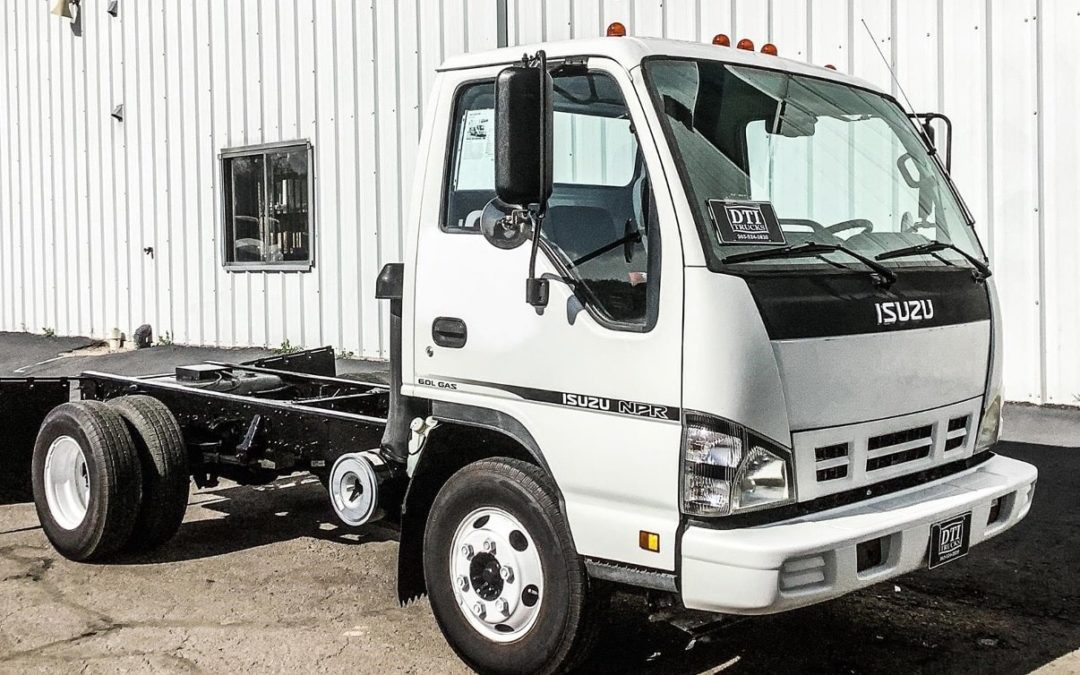
The transmissions paired with these engines typically the Aisin automatic or manual options match the engine’s durability profile with straightforward, overbuilt designs.
Similarly, the truck’s electrical systems are engineered with commercial reliability standards, featuring accessible components, redundant systems where critical, and protection against the vibration and temperature extremes that quickly destroy lesser vehicles.
The cab-over design, while initially appearing more complex than conventional trucks, actually simplifies many maintenance procedures by allowing complete engine access when tilted forward.
Fleet operators consistently report Isuzu NPR/NQR trucks regularly achieving 500,000+ miles with only routine maintenance, an impressive figure considering these vehicles often operate in the most punishing conditions possible for commercial trucks.
Urban delivery routes subject them to constant stop-and-go driving, full loads, and minimal highway miles that would quickly wear out less robust vehicles.
Their longevity becomes even more remarkable considering many spend their operational lives idling during deliveries or powering auxiliary equipment like refrigeration units and hydraulic lifts.
The most compelling testament to the Isuzu diesel cabover’s durability comes from major fleet operators and leasing companies, who continuously select these vehicles specifically for their low total cost of ownership over multi-decade service lives.
Companies like Penske, Ryder, and FedEx deploy Isuzu diesel trucks in massive numbers because the data consistently shows they spend less time in repair facilities and more time generating revenue than competitors.
While not as widely celebrated as pickup trucks among enthusiasts, the Isuzu NPR/NQR diesel cabover deserves recognition as perhaps the ultimate expression of diesel truck reliability in the commercial sector.
5 Diesel Trucks That Constantly Stall
Despite their rugged appearance, these problematic diesel trucks suffer from chronic reliability issues that leave owners stranded with irregular stalling and frustrating no-start conditions.
Their overcomplicated emissions systems and questionable engineering decisions create a perfect storm of failure points, from clogged fuel filters to malfunctioning sensors that bring these supposedly tough trucks to a halt.
What should be dependable work vehicles instead become workshop regulars, with owners reporting multiple dealer visits and thousands in diagnostic fees, trying to solve persistent stalling problems.
The bitter irony of paying premium prices for diesel reliability only to experience worse dependability than gasoline alternatives leaves many buyers regretting their purchase and warning others away.
1. 6.0L Power Stroke Ford Super Duty (2003-2007)
The 6.0L Power Stroke diesel engine, which powered Ford Super Duty trucks from 2003 to 2007, has earned a notorious reputation as one of the most problematic diesel powerplants ever installed in a production pickup.
Following the highly regarded 7.3L Power Stroke, this replacement engine represented a dramatic step backward in reliability that continues to haunt Ford’s diesel reputation despite subsequent improvements.
The 6.0L’s failures were so widespread and consistent that they spawned an entire industry dedicated to fixing its inherent design flaws and resulted in protracted legal battles between Ford and the engine’s manufacturer, Navistar International.
At the heart of the 6.0L Power Stroke’s troubles was its emissions system, introduced to meet stricter regulations. The exhaust gas recirculation (EGR) system was particularly problematic, prone to clogging with soot and causing overheating issues that could lead to cracked heads and blown head gaskets.
The oil cooler, inadequately designed for the engine’s heat load, frequently clogged and restricted flow, creating a cascade of failures, including EGR cooler ruptures that allowed coolant to enter the combustion chambers.
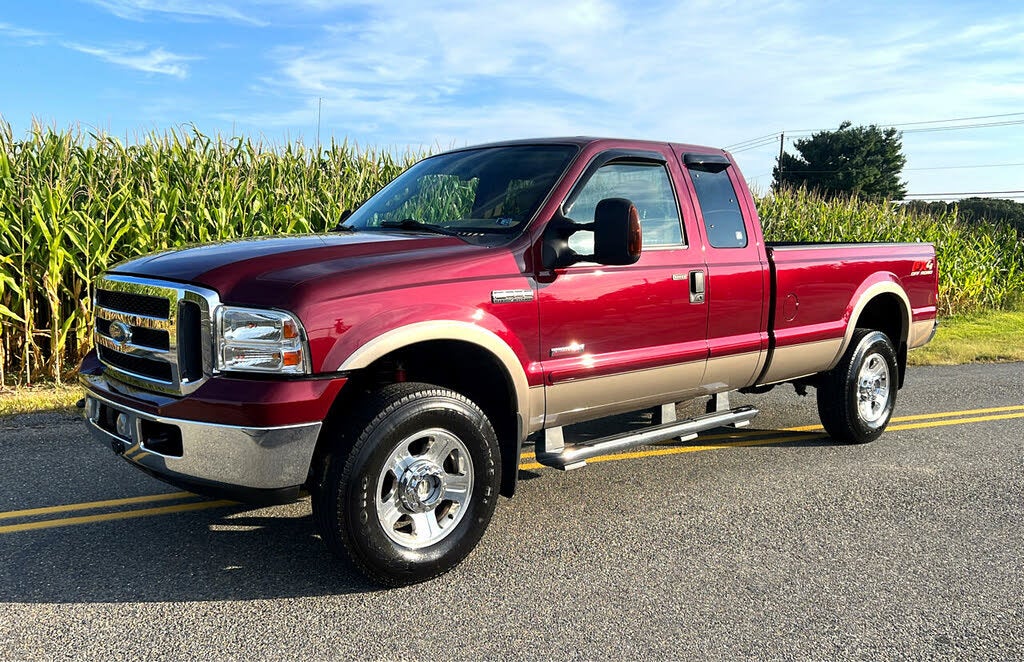
Combined with the engine’s torque-to-yield head bolts that stretched under pressure, these cooling system inadequacies made head gasket failures almost inevitable at higher mileages.
The high-pressure oil system that powered the fuel injectors proved equally troublesome. Oil pump failures, injection pressure regulator issues, and stick-slip problems with the injectors themselves led to hard starting, rough running, and complete breakdowns.
The complex variable geometry turbocharger was prone to carbon buildup that would eventually cause the vanes to stick, resulting in poor performance, excessive smoke, and eventually complete failure. Even the engine’s computer systems caused headaches, with numerous sensors and control modules prone to malfunction.
The financial impact on owners was devastating. Repair bills frequently ran into the thousands of dollars, often recurring shortly after previous repairs. Many owners faced complete engine failures before reaching 100,000 miles, a threshold that previous generation diesel engines would routinely triple without major issues.
The problems were so pervasive that Ford extended warranties and settled class-action lawsuits, while many dealerships developed specialized 6.0L repair departments just to handle the volume of failures.
Perhaps most telling is what owners eventually did to achieve reliability: they “bulletproofed” their engines through extensive modifications that essentially redesigned Ford’s original work.
These modifications typically cost $8,000-$10,000 and include aftermarket oil coolers, EGR deletes or upgrades, head studs to replace the factory bolts, and reinforced fuel systems.
The fact that such extensive reworking became standard practice speaks volumes about the fundamental flaws in the 6.0L Power Stroke design.
For many owners, the 2003-2007 Ford Super Duty represents a painful lesson in how quickly a manufacturer’s reputation for reliability can be undermined by a single problematic powerplant.
2. GM 6.5L Detroit Diesel V8 (1992-2000)
The 6.5L Detroit Diesel V8 engine that powered General Motors trucks through most of the 1990s has developed a reputation as one of the least reliable diesel powerplants in modern pickup history.
Unlike some engines that suffer from a particular Achilles’ heel, the 6.5L suffered from a constellation of recurring issues that collectively earned it derision from mechanics and owners alike.
Despite GM’s attempts to address problems through numerous design revisions, the engine never achieved the durability expected from a diesel truck powerplant.
The most infamous failure point of the 6.5L Detroit Diesel involved its Pulse Width Modulated (PWM) injection pump driver module, commonly called the PMD or FSD.
This critical electronic component, inexplicably mounted directly on the hot injection pump where it was subjected to excessive temperatures, regularly failed without warning.
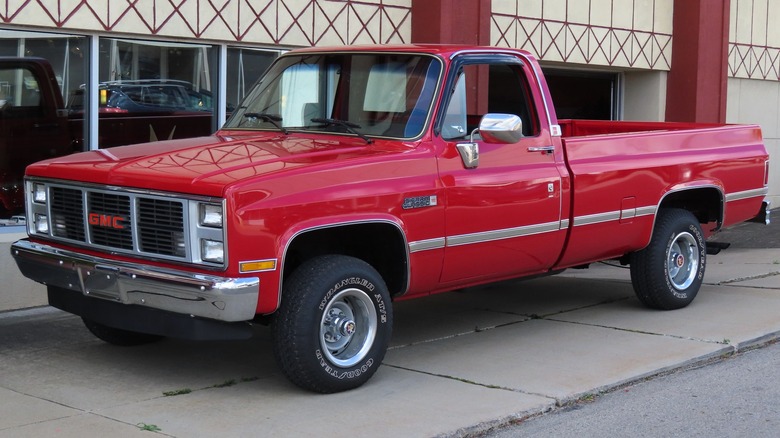
When the PMD failed and it did so with remarkable consistency, the truck would immediately shut down, often leaving drivers stranded in dangerous situations.
Aftermarket solutions eventually emerged that relocated the PMD to cooler areas, but this represented an admission that the original design was fundamentally flawed.
Cooling system inadequacies plagued the 6.5L throughout its production. The engine was particularly prone to overheating when towing or operating in hot climates, leading to cracked cylinder heads and blown head gaskets.
The factory water pump design proved inadequate, with plastic impellers that deteriorated over time and provided insufficient coolant flow. Coolant leaks at the intake manifold gaskets became almost expected maintenance, while block heaters routinely failed and sometimes caused coolant loss.
The injection system beyond the PMD caused numerous headaches as well. Injector failures occurred frequently, with symptoms including hard starting, rough running, and black smoke.
The injection timing was notoriously difficult to set correctly, and the mechanical lift pump often failed, causing fuel starvation to the injection pump and potentially catastrophic damage. Crankshaft position sensors failed regularly, causing no-start conditions that left owners stranded.
Perhaps most damning was the 6.5L’s reputation for catastrophic failures even with diligent maintenance. Cracked blocks and cylinder heads occurred with disturbing frequency, particularly in the turbocharged variants.
The harmonic balancer was prone to separation, potentially causing major engine damage if not caught early. Even the engine’s computer systems proved problematic, with numerous sensor failures and wiring harness issues that created mysterious performance problems.
While the 6.5L offered meaningful improvements in fuel economy compared to its gasoline counterparts, its operational costs often erased these savings through frequent repairs.
GM eventually phased out the troubled engine in favor of the Duramax diesel developed with Isuzu, tacitly acknowledging the 6.5L’s insurmountable reliability issues.
For many owners who experienced its numerous quirks and failures, the 6.5L Detroit Diesel remains a textbook example of how not to design a diesel truck engine.
3. Nissan Titan XD with 5.0L Cummins V8 (2016-2019)
The Nissan Titan XD, powered by the 5.0L Cummins V8 turbo diesel, represented one of the most ambitious attempts to bridge the gap between light-duty and heavy-duty pickup segments.
Debuting with considerable fanfare in 2016, this powertrain combination promised to deliver fuel efficiency, substantial towing capacity, and the legendary Cummins reliability in a package less intimidating than traditional heavy-duty pickups.
Unfortunately, the reality fell far short of these promises, and the engine was unceremoniously discontinued after just four model years leaving owners with depreciating assets and ongoing reliability concerns.
The Cummins 5.0L V8 diesel’s problems began with its complex emissions control systems, required to meet stringent regulations. The exhaust gas recirculation (EGR) system proved particularly troublesome, with regular valves clogged and cooling components that failed prematurely.
The selective catalytic reduction (SCR) system, which injected diesel exhaust fluid to reduce emissions, frequently malfunctioned with sensors that triggered check engine lights and occasionally forced the truck into limp mode.
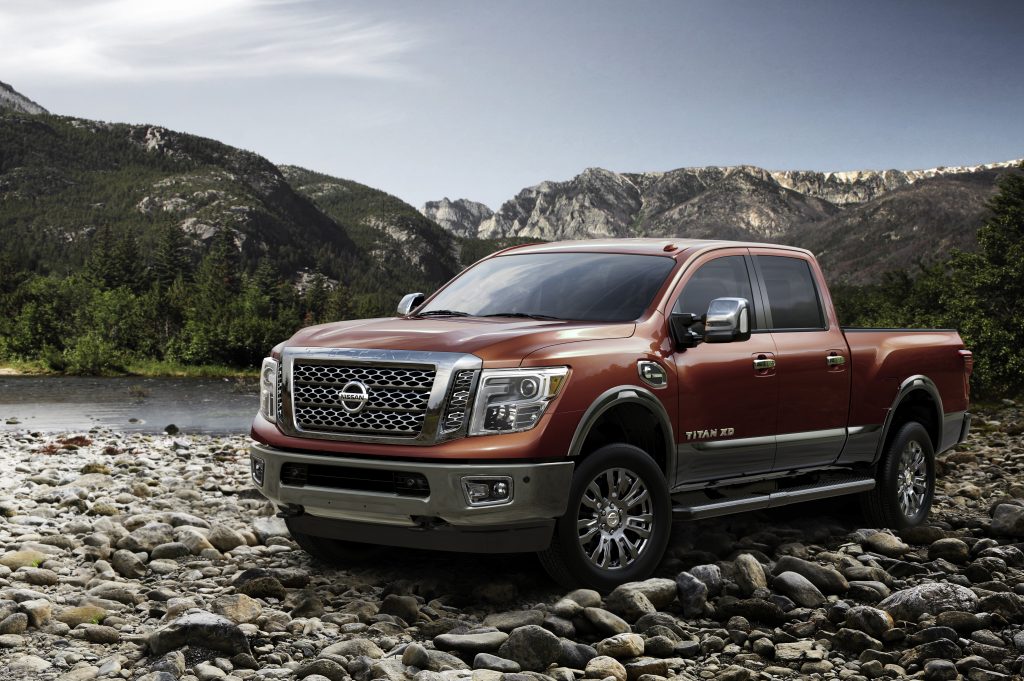
The diesel particulate filter (DPF) clogged more frequently than expected, particularly for owners who used their trucks primarily for short trips or light duty.
Fuel system issues plagued many Titan XD Cummins owners, with high-pressure fuel pump failures reported at relatively low mileages, sometimes below 30,000 miles.
These failures were particularly concerning given the potential for catastrophic engine damage from metal particles circulating through the precisely engineered common-rail injection system.
Injector problems were also reported with surprising frequency for a modern diesel, resulting in rough running, excessive smoke, and starting difficulties.
The engine’s complexity extended to its turbocharging system, which employed sophisticated variable geometry technology. Turbocharger failures occurred with uncomfortable frequency, often presenting first as unusual whistling noises followed by significant power loss.
The engine’s cooling system, while adequately designed in theory, suffered from various failures, including water pump issues and EGR cooler leaks that allowed coolant to enter the combustion chambers, a problem that could lead to hydrolock and catastrophic engine damage.
Perhaps most frustrating to owners was the inconsistency of dealer service experiences. As a relatively low-volume product for both Nissan and Cummins, many dealership technicians lacked thorough training on the engine’s unique systems.
This resulted in extended diagnostic periods, repeated repair attempts, and significant downtime for vehicles still under warranty. As these trucks aged out of warranty coverage, owners faced additional challenges finding qualified independent mechanics familiar with the powertrain.
The Titan XD Cummins experiment ended abruptly when Nissan announced the diesel option would be discontinued after the 2019 model year a remarkably short production run for a major powertrain investment.
This premature discontinuation left owners with rapidly depreciating assets and ongoing concerns about parts availability and service support in the future.
For many who were attracted to the promised combination of Cummins reliability and Nissan value, the Titan XD diesel stands as a cautionary tale about the risks of innovative but inadequately developed diesel truck powertrains.
4. Volkswagen Touareg with 3.0L TDI V6 (2009-2015)
The Volkswagen Touareg equipped with the 3.0L TDI V6 diesel engine exemplifies how sophisticated engineering, when plagued by chronic reliability issues, can transform a luxury SUV into a maintenance nightmare.
This German diesel SUV promised European refinement combined with the torque and efficiency of diesel power, but delivered a problematic ownership experience marred by expensive failures and design flaws.
The situation was further complicated by the infamous “Dieselgate” emissions scandal, which revealed that the vehicle’s impressively clean emissions were achieved through deceptive software rather than sound engineering.
The 3.0L TDI’s problems often began with its complex emissions control systems. The diesel particulate filter (DPF) clogged frequently, especially for owners who primarily drove short distances.
When regeneration cycles failed to clear the DPF, costly replacement became necessary, often exceeding $4,000 at dealerships. The exhaust gas recirculation (EGR) valves consistently developed carbon buildup that caused rough idling, reduced power, and eventually complete failure.
The selective catalytic reduction (SCR) system that injected AdBlue urea solution frequently malfunctioned, triggering warning lights and eventually preventing the vehicle from starting if not addressed.

Fuel system issues represented another chronic pain point for Touareg TDI owners. The high-pressure fuel pump (HPFP) was notorious for catastrophic failures that sent metal particles throughout the fuel system, contaminating injectors and requiring complete fuel system replacement, costing upwards of $8,000. These failures often occurred without warning at moderate mileages (60,000-100,000 miles).
The fuel injectors themselves were prone to failure, causing rough running, excessive smoke, and starting difficulties. Even the low-pressure fuel system suffered from problems with the tandem pump that combined vacuum and fuel pumping functions.
The sophisticated dual-mass flywheel and high-pressure injection pump timing chain tensioner represented additional failure points unique to this powertrain.
The dual-mass flywheel often failed prematurely, causing vibration and eventual transmission damage if not addressed. The timing chain tensioner failures were particularly alarming, as they could result in catastrophic engine failure if the timing chain skipped.
Both issues required expensive repairs involving significant labor costs due to the engine’s tight packaging in the Touareg chassis. Adding insult to injury, the Touareg TDI suffered from electrical gremlins affecting everything from the air suspension to basic convenience features.
The air suspension compressors frequently failed, leaving vehicles sagging on one corner. Control modules for various systems developed communication issues, leading to mysterious malfunctions that proved difficult to diagnose.
Even routine maintenance was complicated by the engine’s tight packaging, driving up labor costs for simple services. The final blow to Touareg TDI owners came with the Dieselgate scandal, which revealed that Volkswagen had programmed these engines to perform differently during emissions testing than in real-world driving.
The mandatory fixes to bring the vehicles into compliance often resulted in reduced performance and fuel economy, further diminishing the value proposition.
Many owners who had paid premium prices for these vehicles found themselves with assets that rapidly depreciated and continued to generate expensive repair bills, cementing the 2009-2015 Touareg TDI’s reputation as one of the least reliable diesel trucks on the market.
5. Range Rover Sport with 3.0L TD6 Diesel (2016-2020)
The Range Rover Sport TD6 represents perhaps the perfect storm of diesel unreliability, combining the inherent complexity of modern diesel technology with Land Rover’s historically challenging reliability record.
This luxury SUV, powered by a 3.0-liter turbocharged diesel V6, promised exceptional refinement, impressive torque for off-road adventures, and improved fuel economy compared to gasoline alternatives.
Instead, owners often found themselves experiencing frequent breakdowns, astronomical repair bills, and frustrating dealership experiences that collectively earned this vehicle a reputation as one of the least dependable diesel trucks available.
The TD6 engine itself suffers from numerous recurring issues, starting with its emissions control systems. The diesel particulate filter (DPF) frequently clogs, particularly for owners who use their vehicles primarily for short trips that prevent proper regeneration cycles.
When the DPF system fails, repairs often exceed $5,000 due to the need to replace multiple components and perform complex diagnostic procedures.

The exhaust gas recirculation (EGR) valves develop carbon buildup at an accelerated rate, causing rough running, reduced power, and eventually complete failure, requiring replacement.
Cooling system failures plague the TD6 with alarming frequency. Water pumps typically fail prematurely, often before 60,000 miles, with leaks that can quickly lead to overheating if not immediately addressed.
The complex cooling system includes numerous plastic components that become brittle with age and heat cycling, resulting in coolant leaks that can be challenging to locate and repair.
Thermostat housing failures are particularly common, as are EGR cooler leaks that can allow coolant to contaminate the engine oil or exhaust system. The fuel system represents another weak point, with high-pressure fuel pumps prone to failure.
When these pumps fail, they often send metal debris throughout the fuel system, necessitating replacement of injectors, lines, and filters in addition to the pump itself, repairs that can easily exceed $7,000.
The fuel injectors themselves frequently develop issues, causing rough running, excessive smoke, and starting difficulties. Even the in-tank low-pressure fuel pump fails regularly, leaving owners stranded despite its relatively simple design.
Beyond engine-specific issues, the TD6-equipped Range Rover Sport suffers from the model’s general reliability challenges. The sophisticated air suspension regularly fails, with compressors burning out and air springs developing leaks.
The complex electrical systems are plagued by module failures and communication errors between components. The advanced eight-speed automatic transmission develops shifting problems that often require expensive repairs or complete replacement.
What makes these reliability issues particularly frustrating for owners is the astronomical cost of repairs and poor dealership experiences. Diagnosis alone often costs hundreds of dollars, while parts prices reflect the vehicle’s premium positioning.
Many owners report repeated repair attempts for the same issues, suggesting fundamental design flaws rather than isolated component failures. The combination of frequent breakdowns and expensive repairs has resulted in catastrophic depreciation, with three-year-old examples often worth less than half their original purchase price.
For diesel truck shoppers seeking reliability, the Range Rover Sport TD6 represents perhaps the clearest example of how sophisticated engineering without adequate durability testing can result in a maintenance nightmare that leaves owners stranded and financially strained.
Also Read: 5 Cars With Seamless Bluetooth and 5 That Always Disconnect

